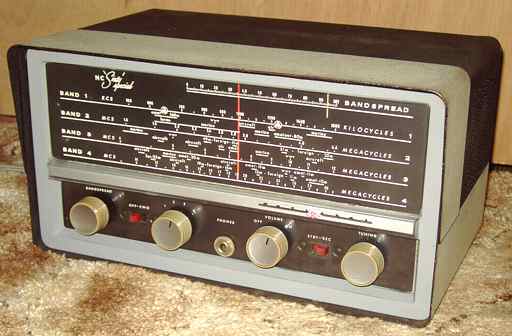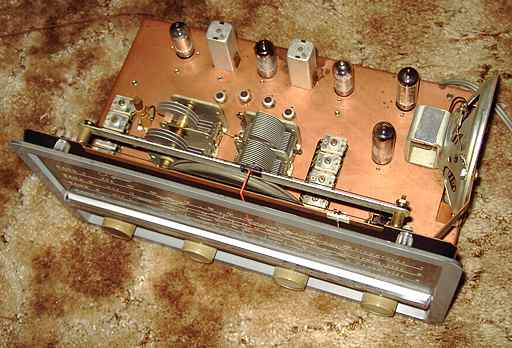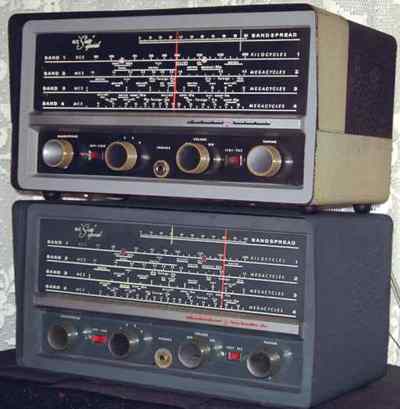
The National "NC-Sixty Special" is a general coverage single conversion AC-DC Broadcast and HF receiver fully covering 550 KHz to 31MHz in 4 bands. It was first advertised in 1959. Has BFO, electrical bandspread, standby-receive switch and headphone jack. The tubes in this set are the 7 pin "All-American Five" series; 12BE6 as oscillator-converter, 12BA6 as IF amp, 12AV6 as detector, AVC, and audio amp, 50C5 as audio output, and 35W4 rectifier. The BFO is regenerative IF. The BFO, the red slide switches, and the entire circuit seem to borrow a page from the Hallicrafters S-38 series.


Troubleshooting
This set was quite filthy when purchased. It was coated in dirt and had adhesive tape strips on the plastic dial with markings for an external 6 meter converter. I did not take a before picture because I did not expect it to come as clean as shown. I used citrus-based "Goo-Gone" to remove the tape residue and white waterless hand cleaner for the rest of the radio and chassis. At some later date , I will probably repaint the gray portion of the cabinet since its base layer of black paint is starting to show a bit.
After cleaning, I checked the set thoroughly before powering it. The main tuning knob did not move the variable cap. I tightened the dial cord a bit by adjusting the spring and lubricated the variable capacitor bearings and dial cord glides to reduce the drag on the dial cord. I also used contact cleaner on the bandswitch.
Since this is a metal cabinet AC-DC set with floating ground, I was careful to check the capacitor which makes up the connection between floating ground (one side of the power line) and the chassis. I powered up the set slowly with my isolated variac while monitoring the B+. The set started playing a local station but with a great deal of hum. Replacing the electrolytic cap sections solved the hum problem. Cleaning the tube pins solved a drop-out / fading problem.
The partial manual on BAMA (in djvu format) does not include any alignment information. I traced the bandswitch connections to identify the eight oscillator and antenna trimmers and tweaked the alignment. After tweaking, the set performed quite well given its simple "All-American Five" circuit.
Two versions
The "NC-Sixty Special" was available in both in gray - black color and in blue. The 1961 Walter Ashe catalog, two years after the introduction of the NC-60, indicates that the cabinet is gray. I am assuming that the blue color was a later choice that may not have been available when the Walter Ashe catalog was printed.
Questions - comparing the NC-60 and the NC-60B
Are all the blue versions actually the NC-60B or are there gray - black NC-60B receivers? Let me know if you have a blue one that is not labeled on the bottom as NC-60B. Let me know if your gray-black NC-60 is labeled as NC-60B on the paper label on the bottom of the cabinet.
In comparing the chassis of the blue NC-60B with the gray-black NC-60, I noticed that the electrolytic pi filter in the NC-60B has three 150 volt cap sections while the gray-back NC-60 has just two. (Both also have the low voltage cathode bypass for the 50C5.) I assume the added electrolytic section with a slightly larger terminal strip to accommodate an extra 1000 ohm resistor was to reduce residual hum in the simple half wave power supply. Are there any other variations?
Here is a picture of both versions. 
The Philips Radio Model 436-AN "Made in USA" was the previous item on the bench.